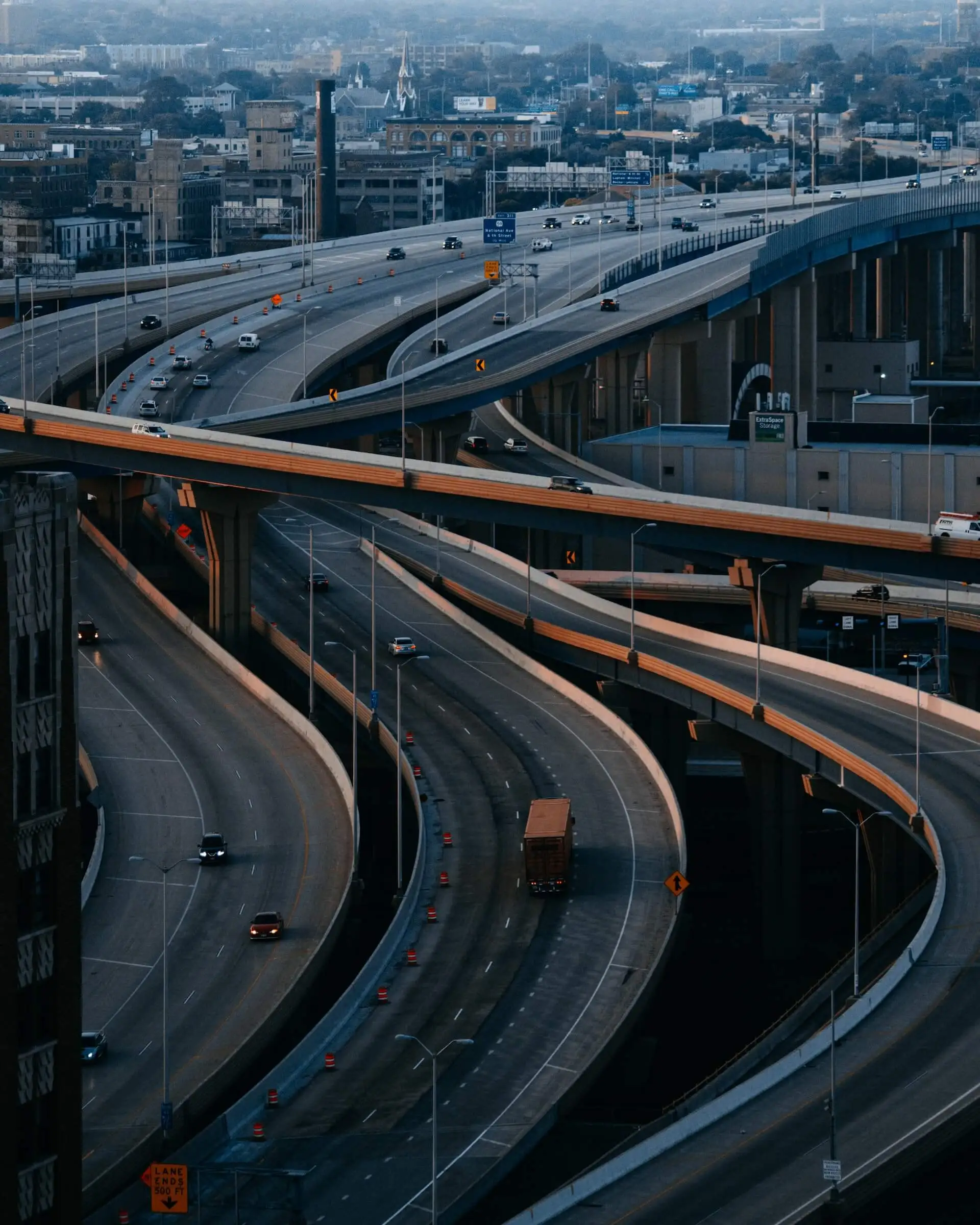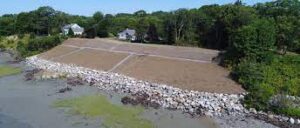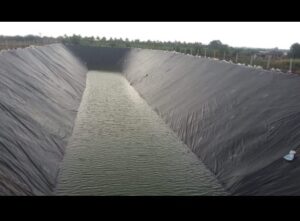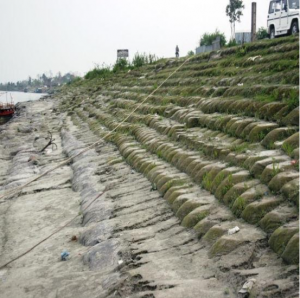Shoreline Protection Stabilization Techniques
Erosion occurs when soil is displaced. There are loads of reasons erosion occurs including human and natural forces. Sometimes, wind and water induce erosion. When erosion happens, the property can be damaged or lost. Exploration erosion control methods are necessary to maintain and protect property and natural habitats. Here, we will explain a few slope and shoreline protection stabilization techniques to prevent and curb erosion.
Geosynthetics is a famous product in the Engineering world. This product, derived from a polymeric element, is normally utilized on significant structure components to achieve engineering purposes.
The prefix “geo” signifies that this product has a lot to do with certain geological materials such as rocks, soil, and earth.
A geosynthetic product arrives with several functions, i.e., reinforcement, separation, drainage, containment, barrier, and the management of land erosion, involving any other function a geosynthetic material is supposed to have.
Table of Contents
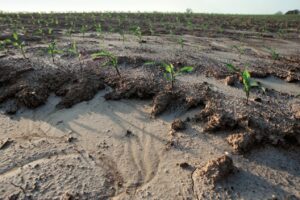
10 Ways in Which Geosynthetics is Used for Ground Improvement
1. GEOTEXTILES
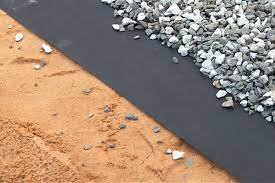
Geotextiles are indeed textiles in a traditional approach but comprise synthetic fibers rather than natural ones such as cotton, wool, and silk. Thus bio-degradation is not an issue. The main point is that they are porous to water flow across their manufactured plane and as well as within their plane but to a broadly varying degree. Geotextile Polymer is produced from polyester or polypropylene. Polypropylene is a material gentler than water (it has a particular gravity of 0.9).
2. GEOGRIDS
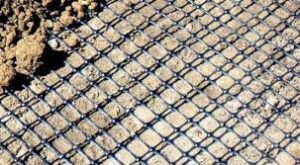
Geogrids are plastics formed into a much open netlike configuration. Single or Multi-layer materials are typically made by extruding and lengthening high-density polyethylene or by weaving or stitching the polypropylene. The resulting grid structure possesses large openings known as apertures. These apertures improve the interaction with the soil and aggregate. It is better soil and aggregate reinforcement because of its good tensile strength and rigidity.
3. GEONETS
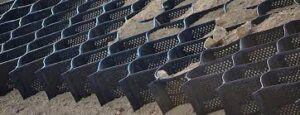
Geonets are stacked crisscrossing polymer strands that give in-plane drainage. The geonets are all produced of polyethylene. The molted polymer is extruded via slits in counter rotating-dies, forming a matrix or a net of nearly spaced “stacked” strands. When strand layers are two it is known as “bi-planar” and three layers of the strand are known as “tri-planar”.
4. GEOCOMPOSITES
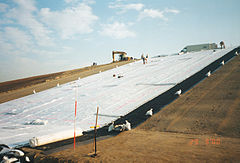
Geocomposites are geotextile filters encompassing a geonet. A Few of the functions of the geocomposites are blanket drains, panel drains, edge drains and wick drains. Blanket drains are generally utilized as Leachate, Infiltration collection, and removal layers internally in the landfill. Panel drains are placed adjacent to the structure to lessen the hydrostatic pressure. Edge drains are utilized adjacent to pavement structures which helps collect and eliminate lateral seepage from the road base.
5. GEOMEMBRANES
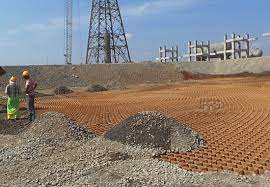
Geomembranes are resistant thin sheets of rubber or plastic material mainly used for linings and covers of liquid/ solid-storage impoundments. Thus the principle function is always as a liquid or vapor barrier. They are around impermeable when compared to soils or geotextiles.
6. GEOSYNTHETIC CLAY LINERS
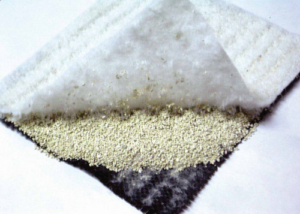
Geosynthetic clay liners (GCLs) involve a thin layer of finely-ground bentonite clay. The clay rises and becomes a much more effective hydraulic barrier when wetted. GCLs are produced by sandwiching the bentonite within or layering it on geotextiles and/or geomembranes. The bondings of the layers are completed with stitching, needling, and/or chemical plaster.
7. GEOFOAM
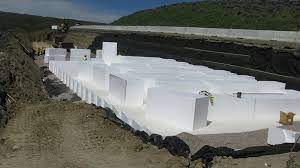
Geo-foam is a newer kind of geosynthetic product. It is a generic name for any foam element utilized for geotechnical applications. Geofoam is produced in large blocks which are stacked to form a lightweight and thermally insulating mass buried beneath the soil or pavement structure. The most common kind of polymer used in the manufacturing of geofoam material is polystyrene. The applications of geofoams are cited below:
It is utilized within soil embankments built over soft and weak soils
Utilized under roads, airfield pavements, and railway track structures which are subjected to excessive freeze-thaw conditions
Utilized beneath on-grade storage tanks including cold liquids
8. GEOPIPE
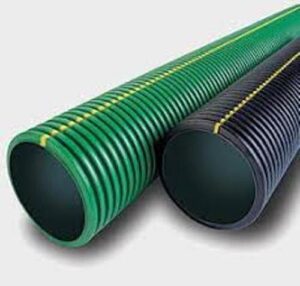
Another important product that has been adopted as a geosynthetic is plastic pipe also called PVC Geo pipe. The specific polymer resins that are employed in the manufacturing of plastic pipes are high-density polyethylene, polyvinyl chloride, polypropylene (PP), polybutylene (PB), acrylonitrile butadiene styrene (ABS), and cellulose acetate butyrate (CAB).
9. TURF REINFORCEMENT MATS
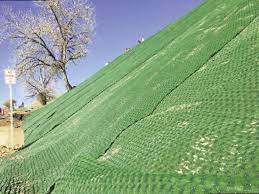
Turf reinforcement mats (TRMs) are 3-dimensional structures created of fused polymer nettings, randomly laid monofilaments, or yarns woven or tufted into an open and compactly stable mat. Erosion protection can be increased by adopting these Mats, which can provide much more protection compared to that of plants grown typically. Proven performance has resulted in the wide use and assured the acceptance of TRMs as a permanent, cost-effective, and eco-friendly alternative to hard armor erosion protection solutions like concrete and riprap.
10. GEOCELL
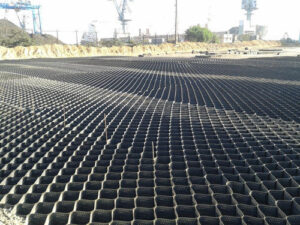
3-D honeycomb-like structures contained in soil, rock, and concrete. They are composed of strips of polymer sheets/ geotextiles, connected at staggered points to make a large honeycomb mat when its strips are pulled isolated. Geocells were manufactured from a novel polymeric alloy known as Neoloy. The geocell with a greater elastic modulus has a stiffness of the reinforced base and higher bearing ability. Geo-cells produced from NPA are found to be significantly better in stiffness, ultimate bearing ability, and reinforcement relative to geocells created from HDPE.
What are beneficial erosion control solutions?
The just permanent erosion control solution is replanting. When people eliminate vegetation, erosion is much more likely to happen. This is because plant root systems assist hold soil in place. Property owners frequently remove unwanted vegetation along the coast to make a more ideal beach.
No single erosion control way will work for all situations. Ensure to look into the geography and climate in your area before investing in one specific erosion control method. These methods are as well often used in combination to create a more effective erosion control system.
The techniques to control soil erosion in hilly areas
The prime ways to control erosion in hilly areas are replanting vegetation and contour plowing.
Superior use erosion control blankets to build up vegetation growth and block erosion faster.
Contour plowing is the practice of plowing at appropriate angles, perpendicular to the slope together with the hill’s contours. This assists in stopping water from flowing straight down the hill and preventing erosion.
Filter Socks
Filter Socks are mesh tubes that operate to trap pollutants from stormwater and can be utilized for slope stabilization on slopes that are as steep as 2:1. They can be utilized in many applications including sediment control, as a dam to avert soil erosion, storm drains, slope interruption, and much more.
Superior Groundcover uses 100% organic elements for all erosion control and Terraseeding applications. compost filter socks are employed for sediment control, slope prevention, stream bank, shoreline stabilization, and vegetated retaining walls.
Stream Bank Stabilization and Lake Bank Stabilization
Stream bank stabilization implies the restoration and protection of banks in streams, lakes, and other channels as an outcome of erosion. Usually, this is completed by planting vegetation, soil bioengineering, and other structural structures.
When selecting a bank stabilization method, view the sustainability of the method, the needed maintenance, and the impact on the natural environment involving water quality.
Vegetative plantings of trees and other deep-rooted plant species are a top bank stabilization method that is environmentally friendly, permanent, and low conservation.
Erosion Control Forms for Slope Stabilization
On arduous slopes, erosion is more likely to happen. Slope stabilization is highly crucial because an eroded slope can become barren. Additionally, erosion of slopes can result in water pollution due to stormwater runoff.
To avert slope erosion, plant grass, and more vegetation. Grasses are best for slope stabilization because of their roots. They as well absorb rainwater and other precipitation, creating water erosion less common.
Erosion control blankets function to add vegetation to slopes. Superior’s Compost Erosion Control Blanket combines nutrient-rich compost blended with high-quality seed to make the perfect environment for quick vegetation establishment and slope stabilization.
Superior’s erosion control solutions outperform original straw blankets, straw matting, silt fences, and other traditional erosion control approaches. Compost provides natural erosion control and protection, adds organic matter straight away to the soil, provides superior water infiltration, and increases aeration in any soil kind.
Methods of slope stabilization
Slope stabilization methods can be categorized into the following kinds:
- Decreasing erosion forces – Erosion is caused by natural and human aspects. The two principal ways to decrease the driving forces of erosion involve changing the geometry of the slope and reducing groundwater.
- Increasing erosion resistance – These methods involve changing the geometry of the slope, Lessing down groundwater, and developing the strength of the soil.
- Surface stabilization
- Soil Improvement – Soil improvement can be done via consolidation, soil reinforcement, or bioengineering.
- Retaining systems – Retaining systems for slope stability involve MSE walls, gravity walls, soldier beams, tangent pile walls, and secant pile walls.
Shoreline Stabilization Techniques
- Imitate Nature – In its natural form, the shoreline can appropriately protect itself against erosion. Imitating nature is the perfect method to help prevent erosion. Use native vegetation close to the shoreline to help build structural integrity and prevent the land from separating apart. The deep roots of these plants assist protect the land from heavy rainfall and winds.
- Bulkheads and Retaining Walls – Bulkheads and retaining walls have been utilized to prevent erosion, but it has been observed that these methods end up increasing erosion eventually. From an environmental viewpoint, retaining walls are the most costly and the most environmentally harmful alternative there is. In case you have a retaining wall or bulkhead recently set up, it would be wise to eliminate it and work on a more raw shoreline stabilization method.
- Buffer Zones – Buffer zones are efficient in slowing down shoreline erosion. A buffer zone is a strip of vegetation at the water’s edge that normally extends between 50 and 100 feet. Native vegetation should begin returning to this area, or you can add grass and native species with deep roots and woody vegetation to aid speed up the process.
- Erosion Matting – With the modernizing of technology, there are now biodegradable products on the market to assist in getting control of exposed shorelines. Erosion control matting is a three-dimensional geotextile fabric that is set down on the shoreline. Spread a layer of seeds beneath the mat, so once the matting is laid down, spread ¾ an inch of soil on peek and then spread seeds across the mat, also.
- Stone and Vegetation Rip Rap – This specific method of shoreline stabilization should only be used if other, more raw methods have not worked. This technique requires a stable underlying soil base and can be tough to put in place. The key idea is to lay the rip-rap (strong quarry stones, or a mixture of live vegetation and stones) in two layers. This technique allows for the shoreline to be stabilized at the time of still providing some habitat for wildlife.
